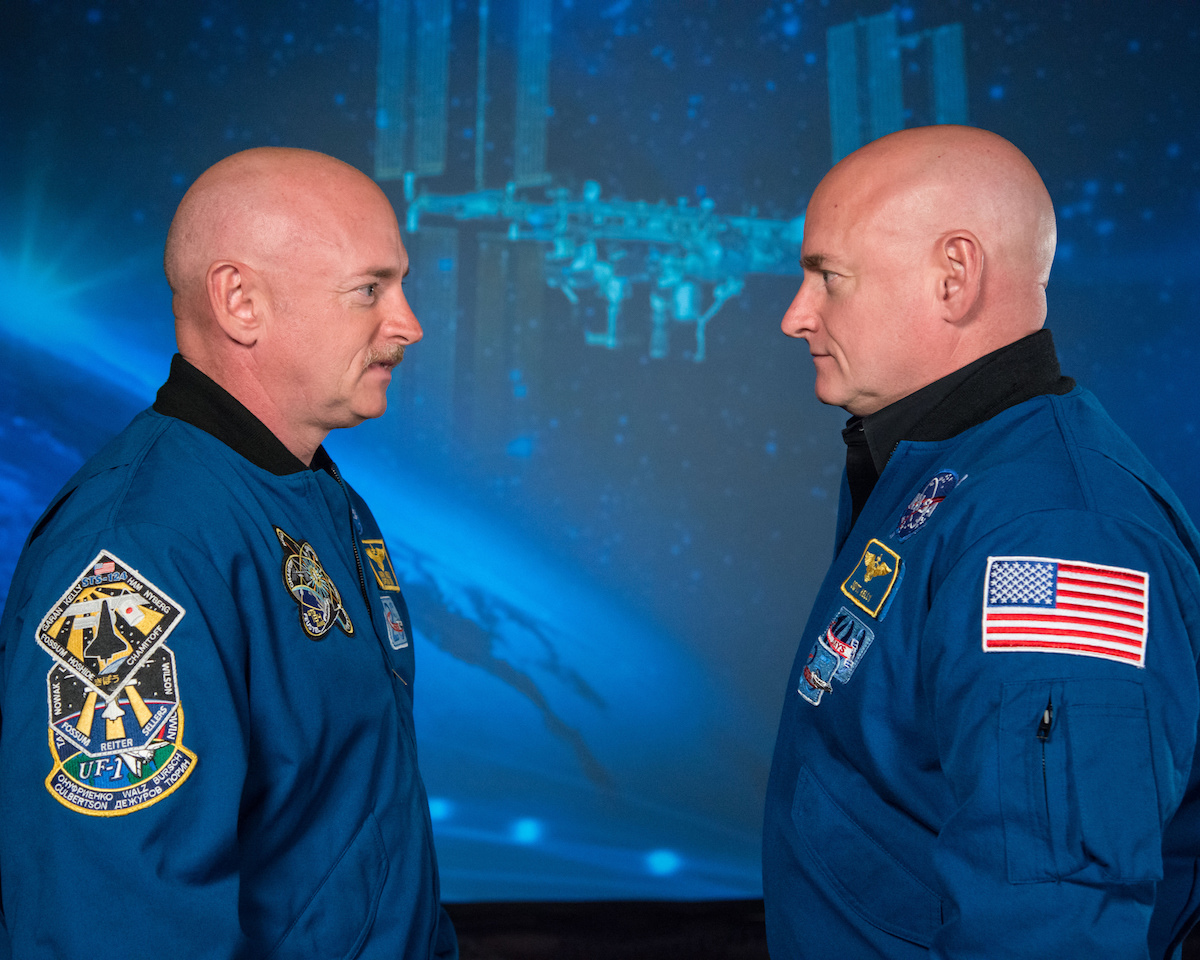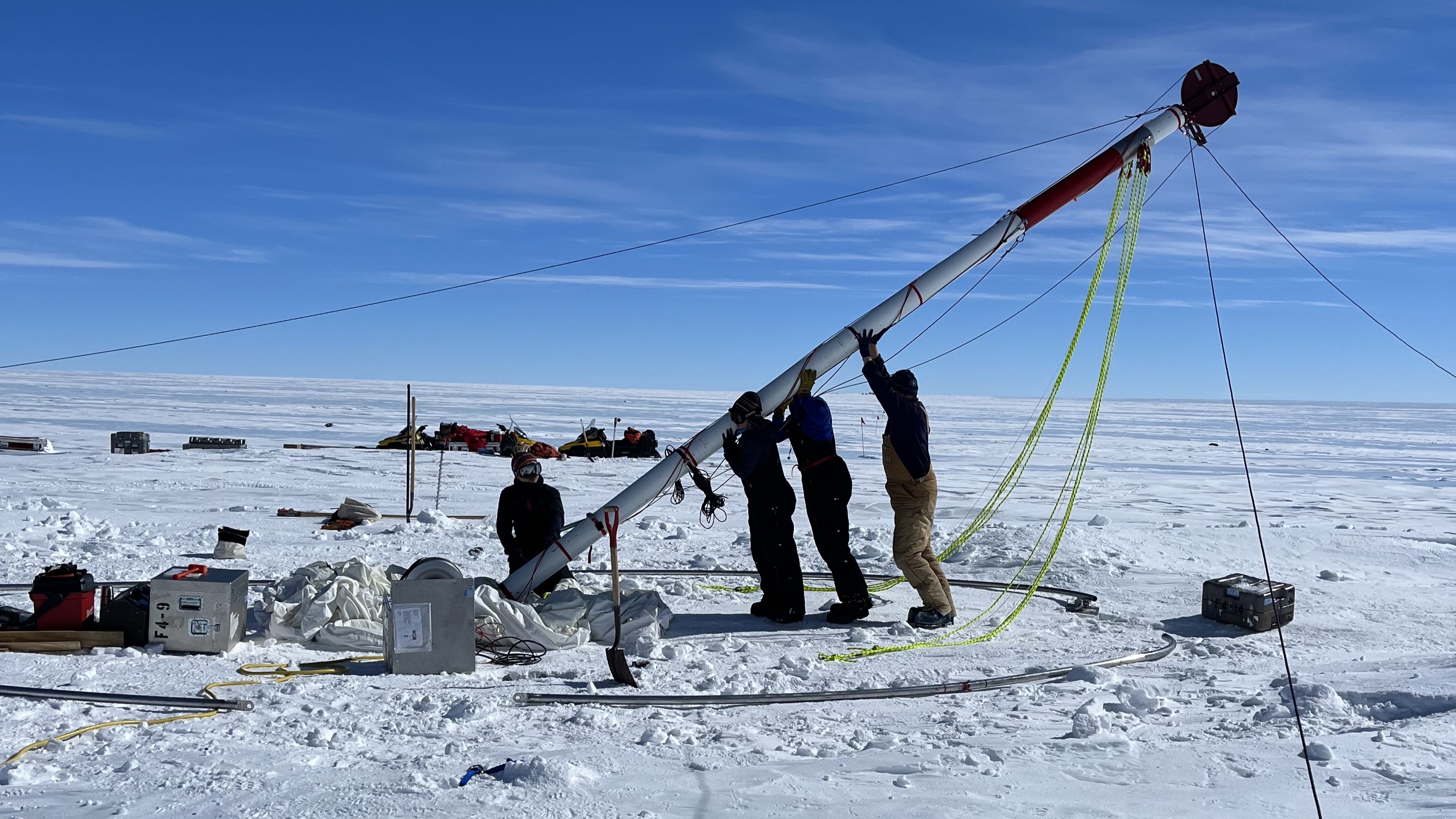Scott Kelly's Year in Space May Have Aged Him — But He's Mostly Fine

In a famous Einsteinian thought experiment called the twin paradox, a twin who embarked on a whirling flight through space would age more slowly compared to the twin left back home on Earth, a result of time dilation when traveling near light speed.
But scientists studying NASA twin astronauts in a real-life scenario found somewhat the opposite: Astronaut Scott Kelly may have aged just a little faster as a result of his yearlong stint on the International Space Station (ISS) compared with his Earthbound brother, Mark.
Mind you, Albert Einstein's theories of physics are safe; Scott Kelly wasn't traveling even close to light speed. At issue is the biological reality that life in orbit — with hazards such as radiation, microgravity, poor sleep and cramped conditions — can take its toll on the body, accelerating the aging process and possibly raising the risk of cancer. [7 Everyday Things That Happen Strangely in Space]
Fortunately for Scott Kelly and all the other brave souls venturing into space, these ill effects do not appear to be extreme and the body seems to be able to mostly recover, according to the most thorough analysis of the NASA Twins Study, published today (April 11) in the journal Science.
The NASA Twins Study
The opportunity to study the only known identical twins, let alone siblings, who have both traveled to space was too great for NASA to pass up. Mark flew on four NASA space missions, each one lasting under two weeks, and retired in 2011.
Scott also flew on four NASA space missions, and the first three were short. For the fourth mission, however, NASA sent Scott to the ISS for 342 days in 2015. The goal was to study the health effects of a long space flight, similar in length to the nine months it would take to journey to Mars. With Scott and Mark, NASA found the perfect test and control subjects, because the brothers share the same DNA.
The twins were monitored before, during and after the nearly yearlong flight. The study published today represents 10 separate investigations — from top to bottom, that is, from brain cognition and vision health down to changes in gut bacteria — conducted by university-based biomedical researchers largely unaffiliated with NASA.
Get the world’s most fascinating discoveries delivered straight to your inbox.
The key finding was that Scott mostly recovered from his year in space after a full year back on Earth. But that said, there were some curious observations.
Telomeres and radiation
While in orbit, the length of Scott's telomeres — which are molecular caps found at the end of each chromosome — actually increased, a sign of reverse aging. Telomere length typically declines as we age. This was the first convincing observation of telomere lengthening, on Earth or in space, according to Susan Bailey, a professor of radiation cancer biology and oncology at Colorado State University and one of the lead investigators on the study.
But Scott lost these gains in length once he returned to Earth and may, in fact, have lasting damage to his telomeres, Bailey said. (It's unclear what caused Scott's telomeres to lengthen in space.)
"Scott's average telomere length after flight stabilized to near his preflight levels," Bailey told Live Science. "However, he did have many more short telomeres after flight than he did before. And that is where I think the long-term health consequence is — possibly being at increased risk of accelerated aging or associated age-related pathologies like cardiovascular disease and some cancers."
Also, at least up to a year after his flight, Scott had lingering changes to his immune and DNA-repair systems compared with preflight. [7 Diseases You Can Learn About from a Genetic Test]
"We don't yet know if [that] is good or bad, but we can say it seems that the process of adapting back to Earth's conditions takes a bit of time," said Christopher Mason, an associate professor of physiology and biophysics at Weill Cornell Medicine in New York, also a lead investigator on the study.
Mason told Live Science that it is also unknown whether Scott is at an increased risk for cancer in the long term as a result of his exposure to cosmic and solar radiation aboard the ISS. Both Mark and Scott were diagnosed and successfully treated for prostate cancer in 2007, a nod to their genetic similarity. Scott, however, has described the potential threat of cancer from space radiation as a time bomb ticking inside him.
Long-duration space travel and health
Despite having a sample size of only one, or perhaps two, the NASA Twins Study has broad implications for understanding the health risks of long-duration space travel, said Markus Löbrich, a professor of radiation biology and DNA repair at Darmstadt University of Technology in Germany. Löbrich was not part of the study but co-wrote an accompanying perspective piece also published in the journal Science.
Löbrich told Live Science that precious little is known about the health effects of space travel, but the NASA Twins Study has taken the first steps in quantifying the risks. He said that the telomere changes, for example, are potentially serious and could be a result of particle radiation. The radiation dose on a Mars mission could be up to five times higher than on an ISS mission, so NASA needs to think of ways to protect astronauts traveling there and back, he said.
But Robert Zubrin, a radiation expert and founder and president of the Mars Society, told Live Science that the NASA Twins Study "support[s] the case that radiation isn't a showstopper for human Mars missions."
Zubrin, who was not involved with the study, estimated that the radiation dose from a year on the ISS, partially shielded from solar and cosmic radiation, would be equivalent to the dose from a six-month trip to Mars, at the fastest speed that current propulsion methods could get us there. So, the fact that Scott Kelly exhibited no immediate ill effect from his yearlong stay on the ISS, as is true for other people who have had comparable cumulative radiation exposure in space, bodes well for Mars exploration, Zubrin said.
Getting to Mars faster would be the best scenario to minimize health risks. Traveling at near light speed, like Einstein's twin, we'd arrive in a few minutes. Barring such a fantastical propulsion breakthrough, we'll have to settle on six to nine months. Thanks to Scott and Mark Kelly, scientists now are more confident that the trip, however arduous, likely won't be deadly.
- 5 Reasons Aging Is Awesome
- Top 10 Things That Make Humans Special
- 7 Ways the Mind and Body Change With Age
Follow Christopher Wanjek @wanjek for daily tweets on health and science. Wanjek is the author of "Spacefarers: How Humans Will Settle the Moon, Mars and Beyond," from Harvard University Press, Spring 2020.

Christopher Wanjek is a Live Science contributor and a health and science writer. He is the author of three science books: Spacefarers (2020), Food at Work (2005) and Bad Medicine (2003). His "Food at Work" book and project, concerning workers' health, safety and productivity, was commissioned by the U.N.'s International Labor Organization. For Live Science, Christopher covers public health, nutrition and biology, and he has written extensively for The Washington Post and Sky & Telescope among others, as well as for the NASA Goddard Space Flight Center, where he was a senior writer. Christopher holds a Master of Health degree from Harvard School of Public Health and a degree in journalism from Temple University.
